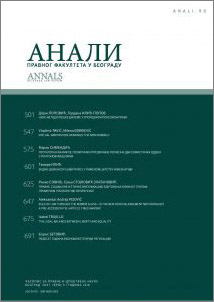Forvm Romanvm: Prof. Dr Lisa Sabbahy Lectured on „Law, Crime and Punishment in Ancient Egypt”
 On Friday, the 29th of April, a lecture titled „Law, Crime and Punishment in Ancient Egypt” was held by Prof. Dr Lisa Sabbahy of the American University in Cairo. She opened her lecture with a story on the Ancient Egyptian myths on the creation of the world and of life, and the concept of (goddess) Maat – the goddess of order, balance, and justice. She also explained the notion of „hep”, which corresponds most closely with the term law, rule, or custom, and the role of the pharaoh in the protection of the universal order – for example, no one could be sentenced to death without the king’s permission – although, in practice, most work was carried out by the tjaty („vizier”), who was also the high priest of Maat. We also heard the speech that Thutmose III gave to his tjaty Rekhmire on the occasion of his installation to the position of vizier circa 1450 BCE; the speech was preserved in Rekhmire’s tomb, and it strongly emphasizes just trials. She also spoke of the organization of the judicial system and the steps that formed part of the court proceedings, including keeping thorough records and the use of oaths, and judgement by moving god statues. The core of the lecture was the analysis of some striking cases – from a temple theft to the assassination of Ramesses III as a result of a grand harem conspiracy over the inheritance of the throne. Records from the hearings show that the accused were tortured („interrogated with a stick”). It’s interesting that there is no explicit mention of the penalty that was handed out to the main perpetrators, although it is almost certain the punishment was death by impalement, while some of the conspirators were allowed to commit suicide. Overall, Prof. Sabbahy emphasized that Ancient Egyptian law handed out the death penalty for offences against the state and against gods. The discussion that ensued dealt with the harshness of the punishments in Ancient Egyptian law in general, the use of oaths in criminal procedure, and the legal consequences of adultery.
On Friday, the 29th of April, a lecture titled „Law, Crime and Punishment in Ancient Egypt” was held by Prof. Dr Lisa Sabbahy of the American University in Cairo. She opened her lecture with a story on the Ancient Egyptian myths on the creation of the world and of life, and the concept of (goddess) Maat – the goddess of order, balance, and justice. She also explained the notion of „hep”, which corresponds most closely with the term law, rule, or custom, and the role of the pharaoh in the protection of the universal order – for example, no one could be sentenced to death without the king’s permission – although, in practice, most work was carried out by the tjaty („vizier”), who was also the high priest of Maat. We also heard the speech that Thutmose III gave to his tjaty Rekhmire on the occasion of his installation to the position of vizier circa 1450 BCE; the speech was preserved in Rekhmire’s tomb, and it strongly emphasizes just trials. She also spoke of the organization of the judicial system and the steps that formed part of the court proceedings, including keeping thorough records and the use of oaths, and judgement by moving god statues. The core of the lecture was the analysis of some striking cases – from a temple theft to the assassination of Ramesses III as a result of a grand harem conspiracy over the inheritance of the throne. Records from the hearings show that the accused were tortured („interrogated with a stick”). It’s interesting that there is no explicit mention of the penalty that was handed out to the main perpetrators, although it is almost certain the punishment was death by impalement, while some of the conspirators were allowed to commit suicide. Overall, Prof. Sabbahy emphasized that Ancient Egyptian law handed out the death penalty for offences against the state and against gods. The discussion that ensued dealt with the harshness of the punishments in Ancient Egyptian law in general, the use of oaths in criminal procedure, and the legal consequences of adultery.

https://www.facebook.com/photo/?fbid=7349802438423957&set=pcb.7349805495090318




